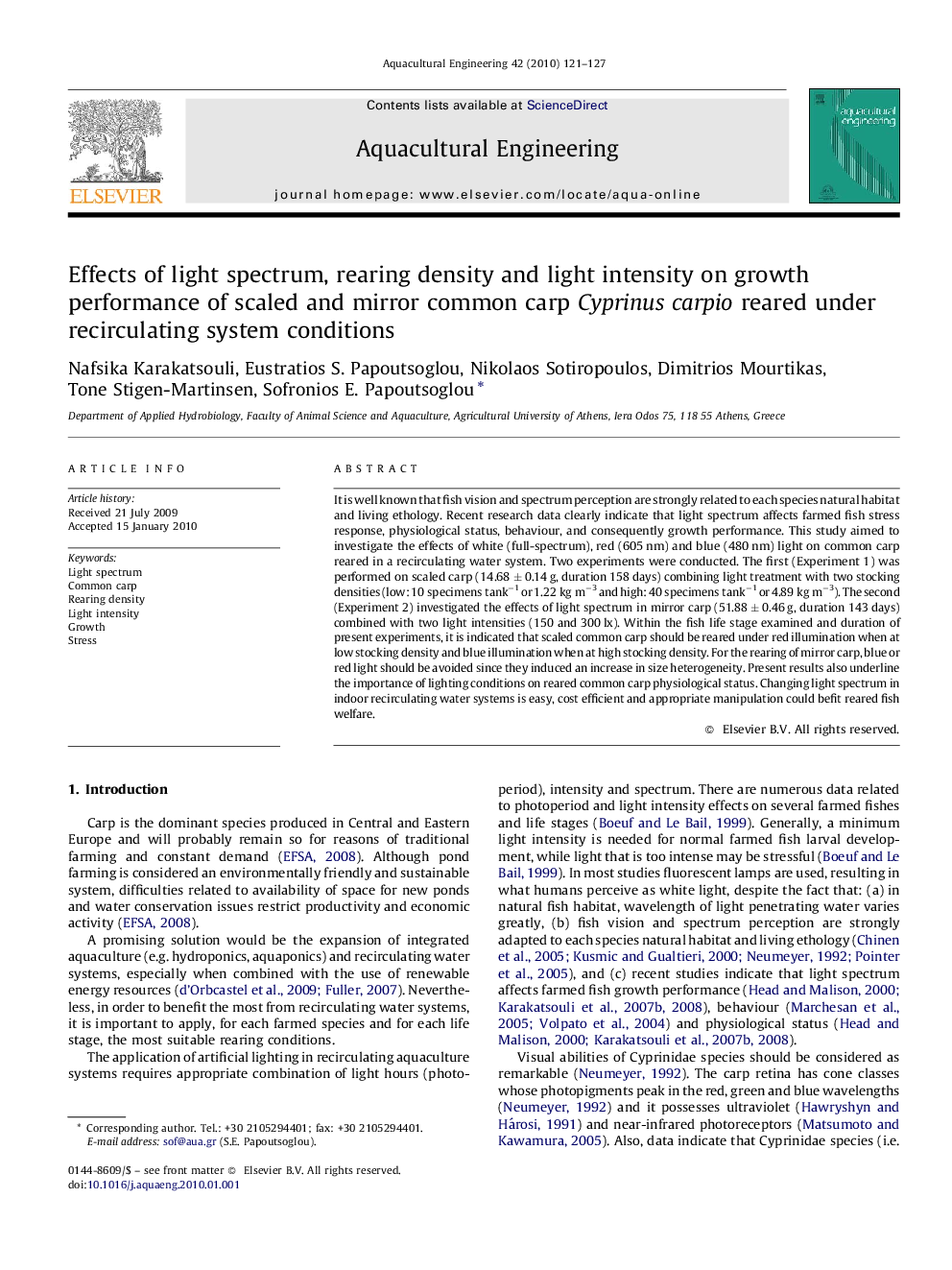| Article ID | Journal | Published Year | Pages | File Type |
|---|---|---|---|---|
| 4527374 | Aquacultural Engineering | 2010 | 7 Pages |
It is well known that fish vision and spectrum perception are strongly related to each species natural habitat and living ethology. Recent research data clearly indicate that light spectrum affects farmed fish stress response, physiological status, behaviour, and consequently growth performance. This study aimed to investigate the effects of white (full-spectrum), red (605 nm) and blue (480 nm) light on common carp reared in a recirculating water system. Two experiments were conducted. The first (Experiment 1) was performed on scaled carp (14.68 ± 0.14 g, duration 158 days) combining light treatment with two stocking densities (low: 10 specimens tank−1 or 1.22 kg m−3 and high: 40 specimens tank−1 or 4.89 kg m−3). The second (Experiment 2) investigated the effects of light spectrum in mirror carp (51.88 ± 0.46 g, duration 143 days) combined with two light intensities (150 and 300 lx). Within the fish life stage examined and duration of present experiments, it is indicated that scaled common carp should be reared under red illumination when at low stocking density and blue illumination when at high stocking density. For the rearing of mirror carp, blue or red light should be avoided since they induced an increase in size heterogeneity. Present results also underline the importance of lighting conditions on reared common carp physiological status. Changing light spectrum in indoor recirculating water systems is easy, cost efficient and appropriate manipulation could befit reared fish welfare.
